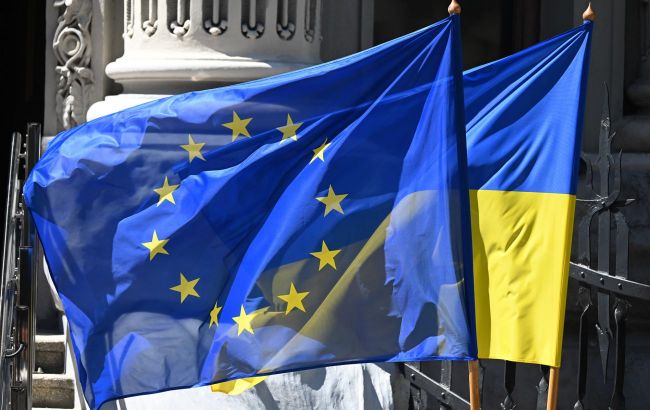Investments instead of weapons: EU's new approach to supporting Ukraine
 EU and Ukrainian flags (photo: Getty Images)
EU and Ukrainian flags (photo: Getty Images)
Europe is beginning to change its approach to supporting Ukraine. Since the EU is unable to supply all the necessary weapons and ammunition, the bloc is moving to invest in Ukraine's military industry, reports The Washington Post.
According to the newspaper, the EU's recent decision to allocate $440 million for Ukraine's defense industry marks a significant shift in the bloc's approach to Russia's war. In particular, it emphasizes the shortcomings of the European Union's defense sector in the production of weapons and ammunition.
While Europe and the United States are sending billions of dollars worth of weapons to help Ukraine in its fight against a much larger Russia, their national defense industries, long oriented toward an international arena with fewer conflicts, can barely keep up with Ukrainian demand.
“I think there’s a realization that Europe is not capable of producing the weapons that Ukraine needs and the easiest way is for the Ukrainians to do it themselves. If the Ukrainians have the materials and money, they can do it much quicker themselves,” said the European diplomat, speaking on condition of anonymity.
Ian Lesser, head of the Brussels office of the German Marshall Fund of the United States, also believes that investing in the Ukrainian arms sector “provides more flexibility” and “gets more capacity to Ukraine in short order". At the same time, it relieves some of the pressure on defense production in Western countries.
At the same time, Lesser noted that none of this will replace large-scale supplies of Western-style weapons to Ukraine.
“That’s simply the reality of the security situation Ukraine finds itself in. The broader point is the progressive integration of Ukraine into Western defense industrial supply chains,” he said.
According to the publication, the EU will use the money received from the profits from Russia's frozen assets in the West to develop the Ukrainian military-industrial complex. Denmark will also provide additional money.
According to one European official, the flow of money to Ukraine's defense industry could increase dramatically in the near future.
“There are a number of nations that are, as far as I know, close to announcing the future use of the same mechanism, either the investing themselves or asking Denmark to invest their money,” he said.
Also, according to the source, such funding to support Ukraine is a watershed in terms of the amount of money, and the idea of financing public money to the Ukrainian military-industrial complex. The official added that the funds will be used to produce missiles, UAVs, and other long-range weapons.
The Washington Post reminded that in June of this year, the EU and Denmark agreed on a mechanism by which Denmark will dispose of $630 million in proceeds from frozen Russian assets, according to the “Danish model.” This is an arrangement whereby Western money is used to pay for contracts that the Ukrainian Defense Ministry has already signed with arms manufacturers, allowing Ukrainians to prioritize what they need.
Dennis Virkelyst, who heads the unit that deals with assistance to Ukraine at the Danish Ministry of Defense, recently said that there would be no “red lines” on their part that would limit the use of weapons.
“There would be no red lines from our side restricting where the weapons could be used... Denmark and the European Union will be able to show the rest of the world how efficiently we spend Russian windfall profits, on weapons going right back deep into Russia,” he said.
The WP added that the EU aid is part of a large package of $1.5 billion derived from the proceeds of frozen Russian assets, which was approved in May and administered through the European Peace Fund, which provides money to EU members to buy weapons for Ukraine.

